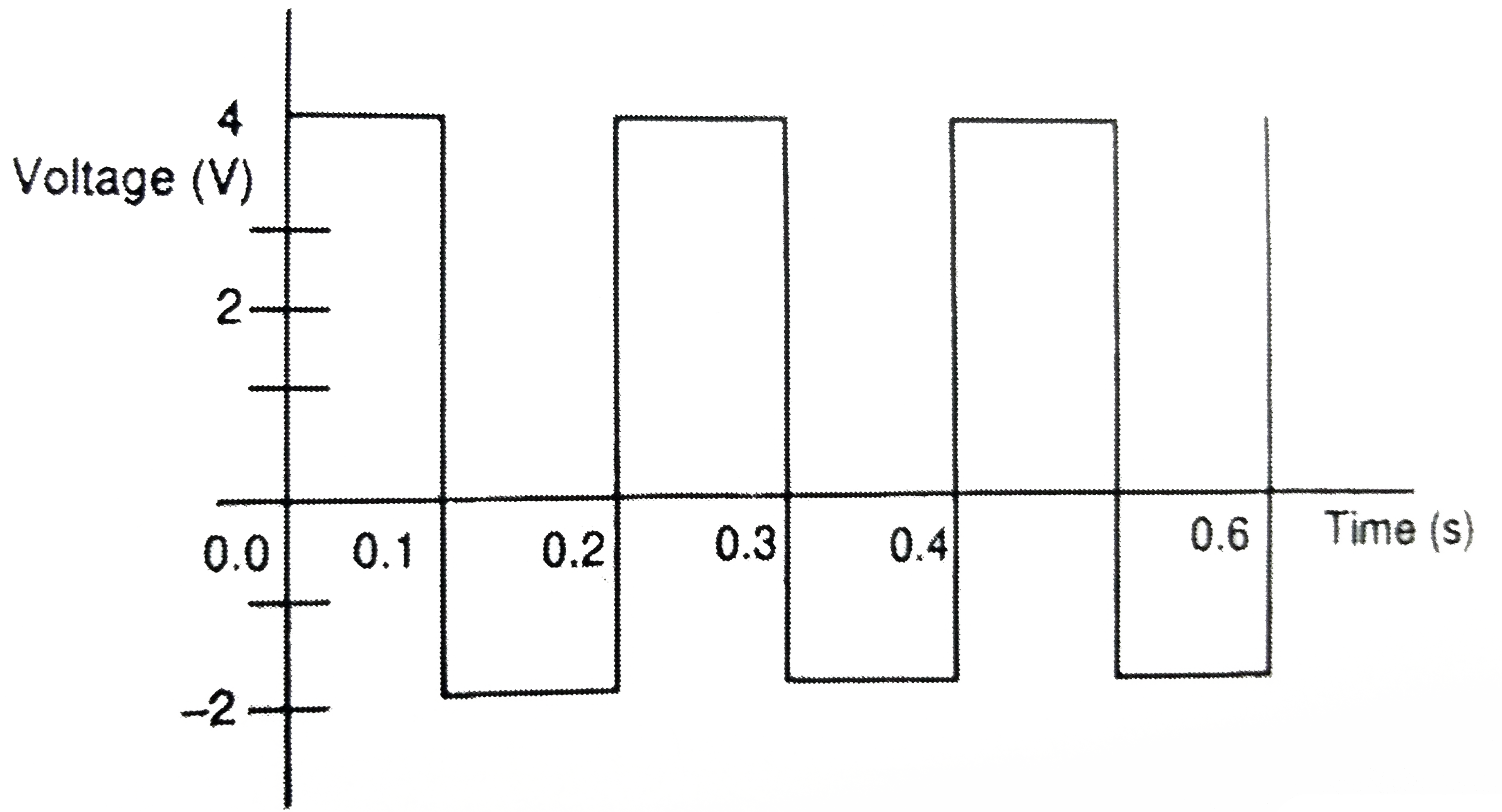The output E of an alternating voltage supply of frequency 50 Hz is shown in Fig. From this Fig, state
(i) value of time t1
(ii) peak voltage E0 (iii) root mean square voltage Ev
(iv) mean supply is connected in series with a resistance of 2.4Ω, calculate the mean power dissipated in the resistor.

Here, v=50Hz,E0=10V
From Fig. we find that
t1=32T=32×v=32×50=0.03s
(ii) peak voltage = 10 V
(iii) Ev=E0√2=101.414=7.07 volt
(iv) Mean averge voltage over full cycle = Zero. the mean power dissipated in the resistor
Ev=E2vR=10√222.4=502.4=20.83W
Topper's Solved these Questions
- BOOK - PRADEEPCHAPTER - ELECTROMAGNETIC INDUCTION & ALTERNATING CURRENTEXERCISE - Solved Examples (b)1videos
ELECTROMAGNETIC INDUCTION & ALTERNATING CURRENT
- BOOK - PRADEEPCHAPTER - ELECTROMAGNETIC INDUCTION & ALTERNATING CURRENTEXERCISE - Short Answer Qusetions2videos
ELECTROMAGNETIC INDUCTION & ALTERNATING CURRENT
- BOOK - PRADEEPCHAPTER - DUAL NATURE OF RADIATION AND MATTEREXERCISE - Exercise191videos
DUAL NATURE OF RADIATION AND MATTER
- BOOK - PRADEEPCHAPTER - ELECTROMAGNETIC WAVESEXERCISE - II Focus multiple choice question5videos
ELECTROMAGNETIC WAVES
Similar Questions
A 31.4Ω resistor and 0.1H inductor are connected in series to a 200V, 50Hz ac source. Calculate
(ii) the voltage (rms) across the inductor and the resistor.View SolutionExpression for instantaneous value of an alternating voltage is given below:
ε=150sin200πt
where t is the time in seconds .
Calculate (i) the peak value of voltage (ii) rms value of voltage and (iii) frequency of supply.View Solution
Knowledge Check
- Question 1 - Select One
An alternating voltage is given by: e=e1sinωt+e2cosωt. Then the root mean square value of voltage is given by:
A√e21+e22B√e1e2C√e1e22D√e21e222 - Question 2 - Select One
An alternating voltage is given by: e=e1sinωt+e2cosωt. Then the root mean square value of voltage is given by:
A√e21+e22B√e1e2C√e1e22D√e21+e222 - Question 3 - Select One
A 10 ohm resistor is conneted to a supply voltage alternating between +4V and -2V as shown in the following graph. The average power dissipated in the resistor per cycle is
 A1.0 WB1.2 WC1.4 WD1.6 W
A1.0 WB1.2 WC1.4 WD1.6 W
A Sinusoidal voltage V = 200 sin 314 t r is applied to a resistor of 10 ohm. Calculate (i) rms value of voltage (ii) rms current (iii) power dissipated as heat.
View SolutionThe instantaneous value of an alternating voltage in volts is given by the expression ɛt=140sin300t where t is in second what is
(i) peak value of the voltage
(ii) Its rms value and
(iii) frequency of the supply? Take π=3√2=1.4View SolutionA 4 μF capacitor and a 500 Ω resistor are connected in series a power supply 20 V , 30 Hz . Calculate the phase angle between voltage and current .
View SolutionAn a.c. voltage of 100 V, 50 Hz is connected across a 20 Ω resistance and a 2 mH inductor in series. Calculate (1) impedance of the circuit, (ii) rms current in the circuit.
View SolutionTwo electric appliances of power rating W1andW2 at 220 V are connected in series with a source of alternating voltage e=220√2sinωt. The resultant power consumed is
View Solution

